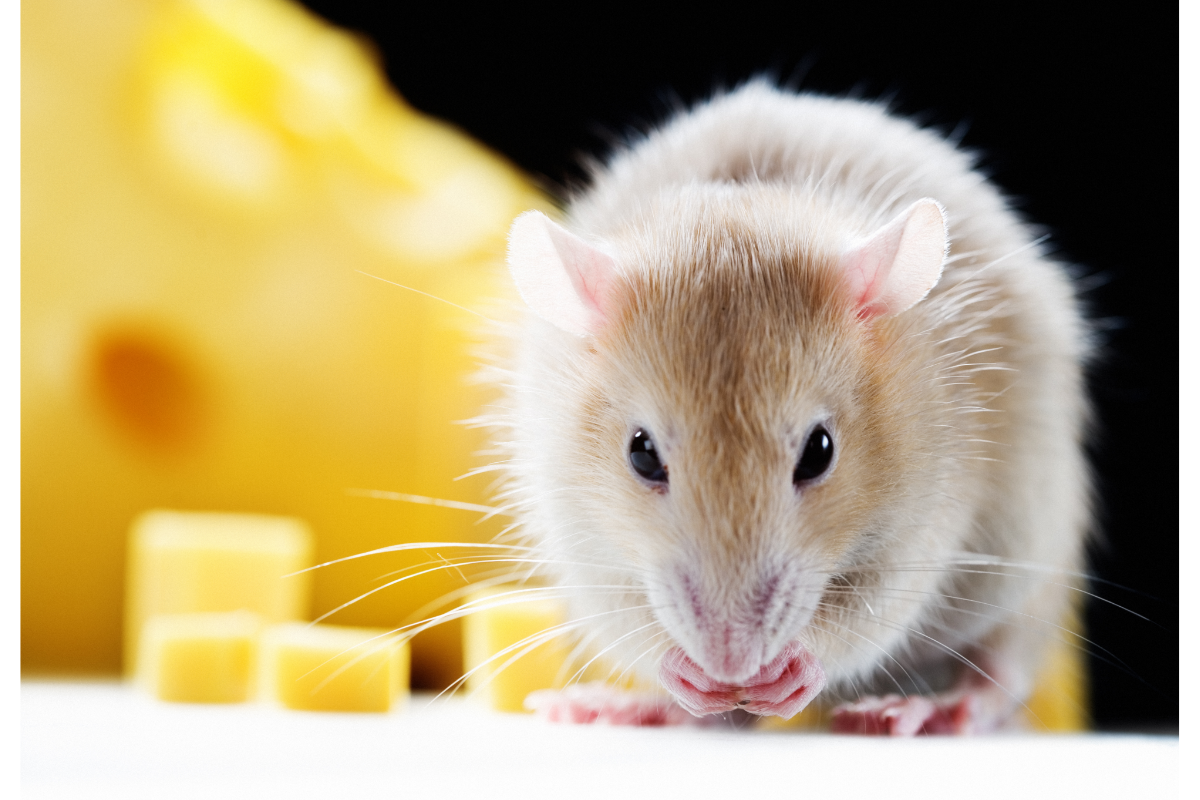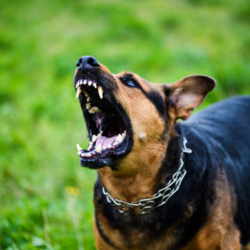Zoonoses, or diseases that can be transmitted from animals to humans, are a major public health issue. These include sodoku, a rare infection caused by the bacterium Spirillum minus. It is transmitted mainly through rat bites and scratches.
What infectious agent is responsible?
Spirillosis due to rat bites, also known as sodoku, is caused by the gram-negative bacillus Spirillum minus. This bacterium is one of two forms of rat-bite fever, the other being streptobacillosis caused by Streptobacillus moniliformis. Spirillae belong to the Betaproteobacteria group. They are strict aerobes or microaerophiles, spiral-shaped and mobile thanks to flagella at their poles.
Spirillae are potentially pathogenic and proliferate in stagnant freshwater, wastewater and soil. They cause diseases known as spirillosis. A spirilla appears as a mobile micro-organism in the form of a wavy or spiral filament. They are sometimes equipped with flagella or vibratory cilia.
Diseases linked to rat bites were first mentioned in ancient India. Rat-bite fever was first reported in the United States in 1839 . In 1884, Millot-Carpentier reported a case in Europe. In 1887, Carter described a spirilla as a frequent host of mice and rats. From 1890 onwards, numerous Japanese researchers studied rat-bite fever or sodoku.
In 1916, Japanese researchers isolated Spirochœta morsus muris as the cause of sodoku. In 1925, Ruys proposed naming Spirillum minus muris the usual parasite of mice and Spirillum morsus muris that of wild rats. The following year, in 1926, researchers confirmed the common identity of the two spirillae.
Before the advent of antibiotics, doctors treated sodoku with arsenic derivatives. In the 1920s and 1930s, specialists used Spirillum minus as a pyrotherapy agent to treat general paralysis or neurosyphilis. Spirillum morsus muris, or S. minus, is a spiral-shaped, mobile and thin, aerobic, Gram-negative bacterium that is difficult to cultivate.
How does this disease manifest itself in animals?
The animals most commonly infected with Spirillum minus are rats . However, infections have also been observed in mice and guinea pigs. These rodents, often asymptomatic carriers, harbour the bacteria without showing any visible clinical signs. This complicates detection of the infection and increases the risk of transmission to other animals and humans.
The geographical distribution of Spirillum minus infections is worldwide. However, the disease is most frequently reported in Asia, where it is endemic in certain regions. Spirillum minus is mainly transmitted to animals through close contact or biting, via the saliva of infected rats. Rats often carry the bacterium in their oral cavity, facilitating transmission to other animals or humans when bitten or scratched.
Despite their ability to harbour Spirillum minus, rats and other rodents generally show no signs of the disease, making their carrier status difficult to identify without specific tests. Because of this inapparent infection, it is essential to closely monitor rodent populations, particularly in areas where the disease is endemic, in order to prevent transmission of the bacteria to humans.
In short, Spirillum minus mainly infects rats, which show no visible symptoms. The bacterium is transmitted by close contact or biting, mainly via the saliva of infected rats. Monitoring rodent populations and prevention measures are crucial to minimise the risk of transmission to humans.
How is it transmitted?
Sodoku is mainly transmitted to humans by rat bites, although there are rare cases of transmission by mouse bites. This infectious zoonosis is transmitted from animals to humans. Professionals who are most at risk, such as pet shop staff, breeders, vets, rat control workers and sewage workers, are at increased risk.
In addition to bites and scratches, there have been isolated cases of transmission by ingestion of contaminated water or milk. However, these modes of transmission remain exceptional. Spirillum minus resides mainly in the saliva of rats and is spread mainly by bites and scratches. A few cases of transmission by other animals, such as monkeys or mice, have also been reported.
The people most at risk are those whose profession or lifestyle brings them into close contact with rodents. Workers who come into regular contact with wild rats, such as exterminators and sewage workers, are particularly at risk. Similarly, people who handle rodents in professional contexts, such as vets and pet shop staff, need to take specific precautions to avoid bites and scratches.
In short, sodoku is mainly transmitted by rat bites or scratches, with an increased risk for professionals exposed to these animals. Prevention of this zoonosis requires rigorous hygiene measures and increased vigilance in environments where rodents are present.
What are the symptoms of this infection in humans?
In humans, the symptoms of sodoku generally appear after an incubation period of up to two months. Initially, there is pain and swelling at the site of the bite, which may develop into ulceration. Later, lymph nodes appear near the wound, indicating a local infection.
As the infection progresses, high fever develops in cycles, and can last for several months if left untreated. This recurrent fever is often accompanied by chills, headaches, vomiting,migratory arthralgias and myalgias. In around 50% of cases, an erythema appears, manifesting itself as a maculopapular, morbilliform, petechial or sometimes vesicular or pustular rash.
If left untreated, symptoms may disappear within 3 to 4 days, but generally reappear 3 to 10 days later, giving rise to a cyclical course of the disease. This progression is punctuated by several successive febrile episodes, which can last for weeks or months. Complications, although rare, can include endocarditis, meningitis and hepatitis, with a mortality rate of around 6% in complicated forms.
In summary, sodoku is characterised by recurrent fever, skin lesions and muscle and joint pain. Prompt recognition and treatment of the infection are essential to prevent serious complications. The symptoms, although varied, follow a recurring pattern that can help differentiate this disease from other similar infections.
How is it diagnosed?
Diagnosis of sodoku is based primarily on clinical observation of symptoms and a history of rat bites. The differential diagnosis compares sodoku with streptobacillosis and various other bacterial and viral infections. Sodoku has a longer incubation period, a more marked recurrent fever and rare joint involvement. Spirillum minus is difficult to culture.
Professionals make a direct bacteriological diagnosis using samples taken from the skin lesion, blood or satellite lymph node. They also identify the bacteria by intraperitoneal inoculation into the animal. The number of white blood cells generally varies between 5,000 and 30,000/mcL. This can help guide the diagnosis.
There is no specific serology for Spirillum minus, but a PCR test amplifying the bacterial ribosomal RNA is possible. Direct visualisation of the bacterium is required as S. minus cannot be grown on synthetic media. The differential diagnosis includes diseases such as streptobacillosis, Haverhill fever, Lyme disease, leptospirosis and other similar infections.
What is the appropriate treatment?
Sodoku is treated primarily with appropriate antibiotic therapy to eradicate Spirillum minus from the infected body. As the bacterium is sensitive to penicillins and tetracyclines, these antibiotics are generally used to treat the infection. The first-line treatment is often penicillin G, administered intravenously. The recommended dose is 200,000 units every 4 hours for 5 to 7 days. Doctors usually follow this initial treatment with an oral relay. They often use amoxicillin at a dose of 500 mg three times a day for a further 7 days.
In cases of allergy to penicillin, health professionals prefer doxycycline as an alternative. This is administered orally at a dose of 100 mg every 12 hours for 14 days. This option is particularly useful for patients with hypersensitivity to penicillins.
For severe forms of infection, such as endocarditis or meningitis, a higher dosage of penicillin G may be required, combined with other antibiotics such as streptomycin or gentamicin. Patients with S. moniliformis endocarditis should receive high doses of penicillin G combined with streptomycin or gentamicin for 4 weeks.
Occasionally, patients experience a Jarisch-Herxheimer type reaction, which temporarily exacerbates symptoms after the start of antibiotic therapy. This reaction results from the release of bacterial toxins when the bacteria are lysed, but is generally self-limiting.
What preventive measures are available?
Prevention of sodoku is based on a series of rigorous hygiene measures and limiting contact with rodents, particularly rats. Here are some essential recommendations for preventing this zoonosis.
It is crucial to prevent any risk of direct or indirect contact between farmed and wild rodents. Premises must be regularly cleaned and disinfected. Rodent corpses should be stored in refrigerated containers to prevent the spread of bacteria.
General hygiene measures should be put in place to reduce the risk of infection. This includes controlling the presence of rats by avoiding attracting them with food deposits or cluttered premises, and carrying out regular deratting. Rodent premises, equipment and cages must be cleaned and disinfected regularly.
Workers exposed to rodents, such as pet shop staff, breeders and vets, must receive appropriate training on the risks associated with sodoku, as well as on collective and individual preventive measures. They must also be trained in handling and restraining rodents to minimise the risk of bites and scratches.
Appropriate personal protective equipment must be worn, such as resistant gloves, boots and specific work clothing. Workers must have access to drinking water, soap and single-use wiping materials to wash their hands after any contact with animals, waste or animal faeces.
Hygiene rules must be strictly observed. Workers must wash their hands systematically after handling animals or their droppings, and before meals or breaks. In the event of a wound, the affected area must be washed, soaped and disinfected, then covered with an impermeable dressing.
Some epidemiological data…
Sodoku is a zoonosis with a worldwide distribution. However, it is much more prevalent in Asia, particularly Japan, where it remains endemic. In France, the disease is rare. It mainly affects professionals at risk, such as pet shop workers, breeders, vets, exterminators and sewage workers.
Rats are the main reservoir of Spirillum minus, although other rodents can also carry the bacteria. Rats can harbour the bacteria in their oral cavity and transmit it by biting or scratching. The disease can also be transmitted to other carnivores that feed on rodents, such as dogs and cats, as well as to humans.
Rat-bite fever is transmitted to humans in around 10% of rat bites. However, it is important to note that many cases can go undetected. This is because the nature of the infection is often asymptomatic in rodents. Streptobacillary and spirillary forms of rat-bite fever mainly affect residents of crowded urban areas and biomedical laboratory staff.
In France, the disease is exceptional and is not notifiable. It is not included in the tables of occupational diseases. What’s more, Spirillum minus is not classified in any hazard group under the French Labour Code. This means that surveillance for this infection relies mainly on the vigilance of health professionals and exposed workers.
Epidemiological data show that sodoku is a zoonosis with a worldwide distribution, with a higher prevalence in Asia. Rats are the main reservoirs, and transmission to humans is mainly by bite. In France, the disease is rare and mainly affects professionals at risk.





